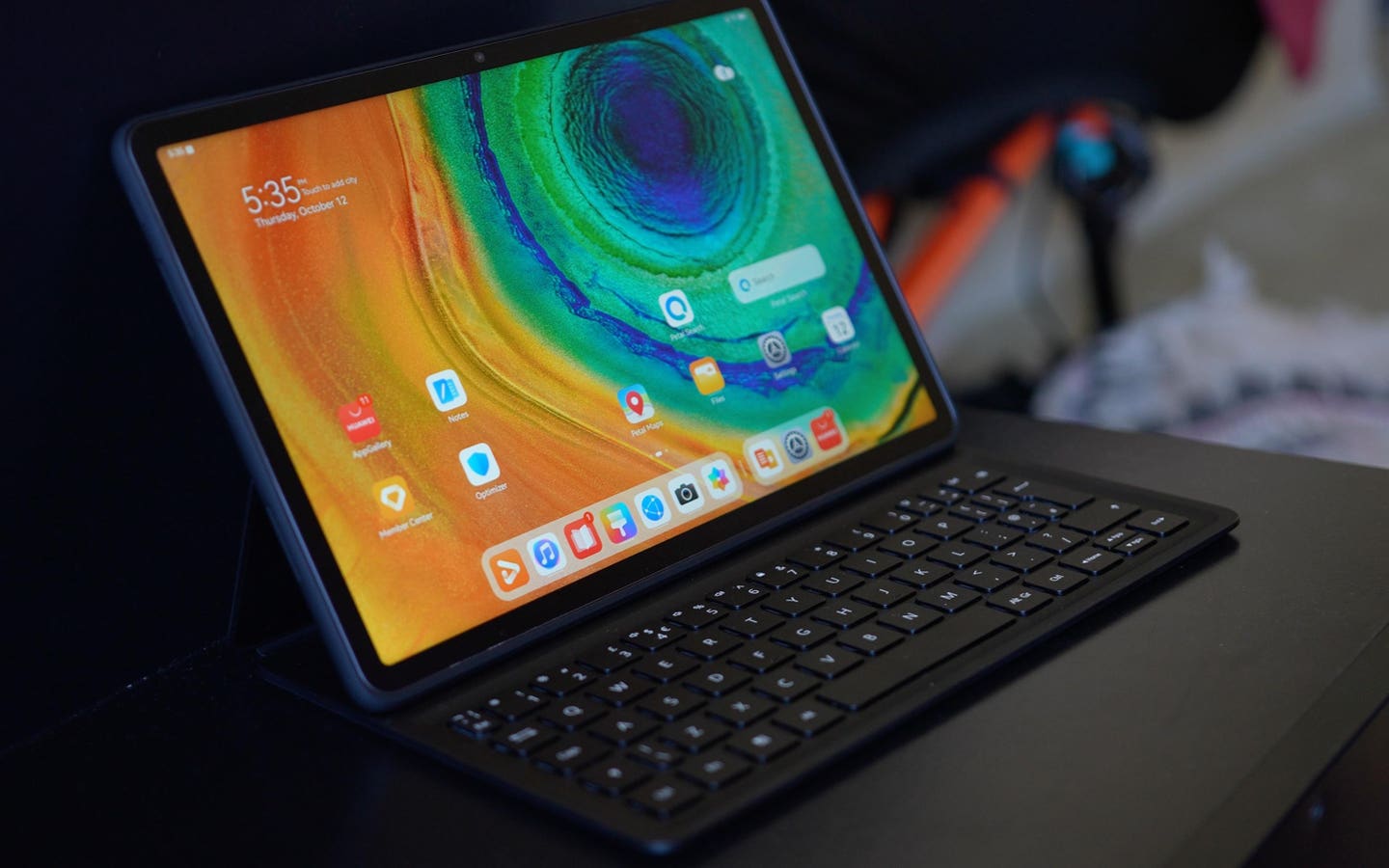Android tablets are a dime a dozen these days—and actually, iPads are too—and while they all perform very well, it’s starting to become difficult to distinguish them apart.
Leave it to Huawei to do something radically different. The tech giant’s new tablet, Huawei MatePad 11 PaperMatte edition is a tablet with a display that appears matte, meaning it’s not as glossy and reflective as conventional glass screens.
This isn’t purely a matte coating applied on the outside; instead the matte materials are embedded into the glass display at a nano level, this allows the screen to resist reflections even more, as well as provide a touch that fees less slippery to the finger.
This matte screen is just half of the goal; Huawei also developed display technology that turns what is normally a colorful vivid screen into something resembling a color e-ink screen, sort of like a Kindle or Remarkable.
The goal is to create a tablet that can double as both normal and e-ink tablet. This means a screen that’s vivid and colorful enough for gaming, moviewatching, Instagram scrolling (conventional tablet stuff) and also can get dim and less reflective enough to resemble an e-ink screen, which consumes less power and is easier on the eyes.
Huawei mostly gets there. While the screen, in e-ink mode, does behave like a Kindle, with a screen that doesn’t produce blue light and the matte nature providing friction for stylus tips, the colors of the screen in “normal” mode looks slightly washed out. It’s nothing too serious, this is still a good looking 120Hz 2.5K LCD screen, and I’m sure someone will say my mother wouldn’t be able to see a difference. But my trained eyes can see where colors and visuals don’t quite pop on a “normal” Huawei tablet.
The tablet also includes a stylus (named M Pencil) and magnetic keyboard as part of the package, which makes the roughly $500 price (converted from regional prices in Asia) a pretty good deal.
The stylus, however, cannot attach to the tablet, and is charged via a cable that needs to be plugged into the tablet. This is a very cumbersome way to charge a stylus, but I suppose I can’t complain too much about a freebie accessory.
The stylus works well, with low latency and various degrees of pressure recognition. Paired with the e-ink screen and matte display finish, jotting notes or sketching on this device feels more satisfying than doing so on an iPad.
The keyboard is excellent. It props up the tablet when in use, and covers and protects the tablet when not. It also can detach from the tablet and still work via bluetooth, which many other tablet keyboards cannot.
The processor powering the tablet is from Qualcomm, a Snapdragon 870 chip that was once a flagship chip four years ago. Now, its performance level is about on par with a mid-tier silicon, which is good enough. I typed words, sketched, sent emails—often doing these things at the same time using Huawei’s robust multitasking system—and the machine didn’t bog down.
There are a pair of cameras, a 13-megapixel rear facing shooter and an 8-megapixel webcam. Both get the job done, but are nothing to write home about. The 7,250 mAh battery in here gives the tablet surprisingly long battery life, perhaps due to the fact I’d use e-ink mode (which consumers less power) quite often.
Do note the tablet cannot install most Google apps like YouTube, but you can log onto YouTube via the web browser and the service will work. The lack of GMS isn’t a big deal for a device that’s meant to be used like a computer.
Overall, the Huawei MatePad 11 PaperMatte is a versatile and unique tablet that doesn’t cost an arm and a leg. If you do a lot of reading or writing notes, the benefit of having a display that feels a bit more like paper, and doesn’t reflect light like conventional screens, make this a worthy purchase. But if you use your tablet mostly for consuming videos and gaming, you’re still better off going with a traditional tablet.
Read the full article here





